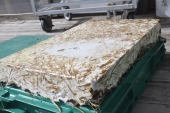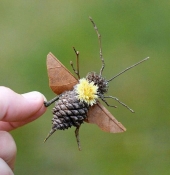
 1
1




Check out Redhawk's soil series: https://permies.com/wiki/redhawk-soil
 2
2




Check out Redhawk's soil series: https://permies.com/wiki/redhawk-soil
 2
2




Check out Redhawk's soil series: https://permies.com/wiki/redhawk-soil




Check out Redhawk's soil series: https://permies.com/wiki/redhawk-soil
 3
3








Check out Redhawk's soil series: https://permies.com/wiki/redhawk-soil








Chris Kott wrote:
Ellendra Nauriel wrote:
Douglas Alpenstock wrote:I see no reason why fir cones would not cook into decent char. Actually there isn't much dry veggie material that wouldn't,
I'll second this. The majority of the char I make is from non-woody material. Crop debris such as bean shells, sunflower shells, corn stalks, etc, all make decent char. If you have a dog or cat, their poo can be made into char as well, eliminating both the smell and anything infectious that might be lurking inside.
Try the cones and let us know!
Ellendra, that's genius.
I know about pyrolysing toilets for humans, and if I have a glut of heat energy, I would go that route for human feces, simply for the ability to cook out and break down any contaminants, including but not limited to microplastics and pharmaceutical residues.
But the real genius comes when you apply that to cat owners. I simultaneously hate cats and love the two I've had in my life. Cat feces is the bane of my existence, speaking as a former cat owner and gardener; it was one of the driving factors in our choice of Flemish Giant Rabbit over a Russian Blue cross cat (I am allergic, but least allergic to those). The worms appreciate the decision, as we use a product that is raw, unbleached waste product from the paper industry as bedding.
I think that I will remember this if we should ever have cats, and probably for the dogs as well (definitely having dogs).
Jay, I think that pinecones will work fine. They are almost a matrix for something else, though, something that may be too dense to char as a pile. If you had sawdust, for instance, or more shavings, you could stand a bunch of the cones upright in your pan and sift the little bits over them so that the open scales (I am assuming they're open) fill. That would let you get more char per batch, and would make it easier to restrict oxygen by eliminating much of the open air space.
-CK
 4
4




Visit Redhawk's soil series: https://permies.com/wiki/redhawk-soil
How permies.com works: https://permies.com/wiki/34193/permies-works-links-threads
 4
4




Check out Redhawk's soil series: https://permies.com/wiki/redhawk-soil

|
That new kid is a freak. Show him this tiny ad:
The new purple deck of permaculture playing cards
https://www.kickstarter.com/projects/paulwheaton/garden-cards
|







